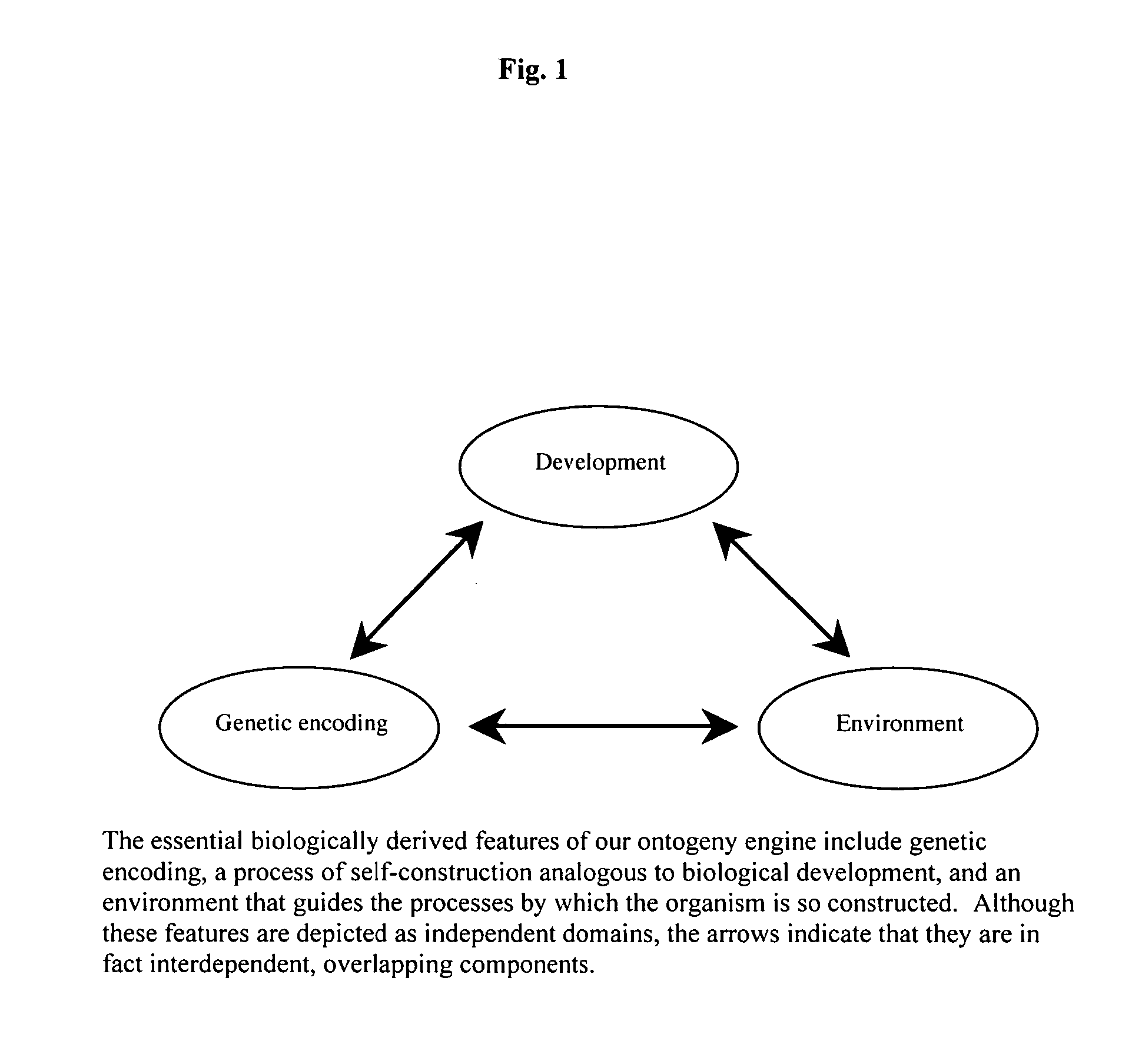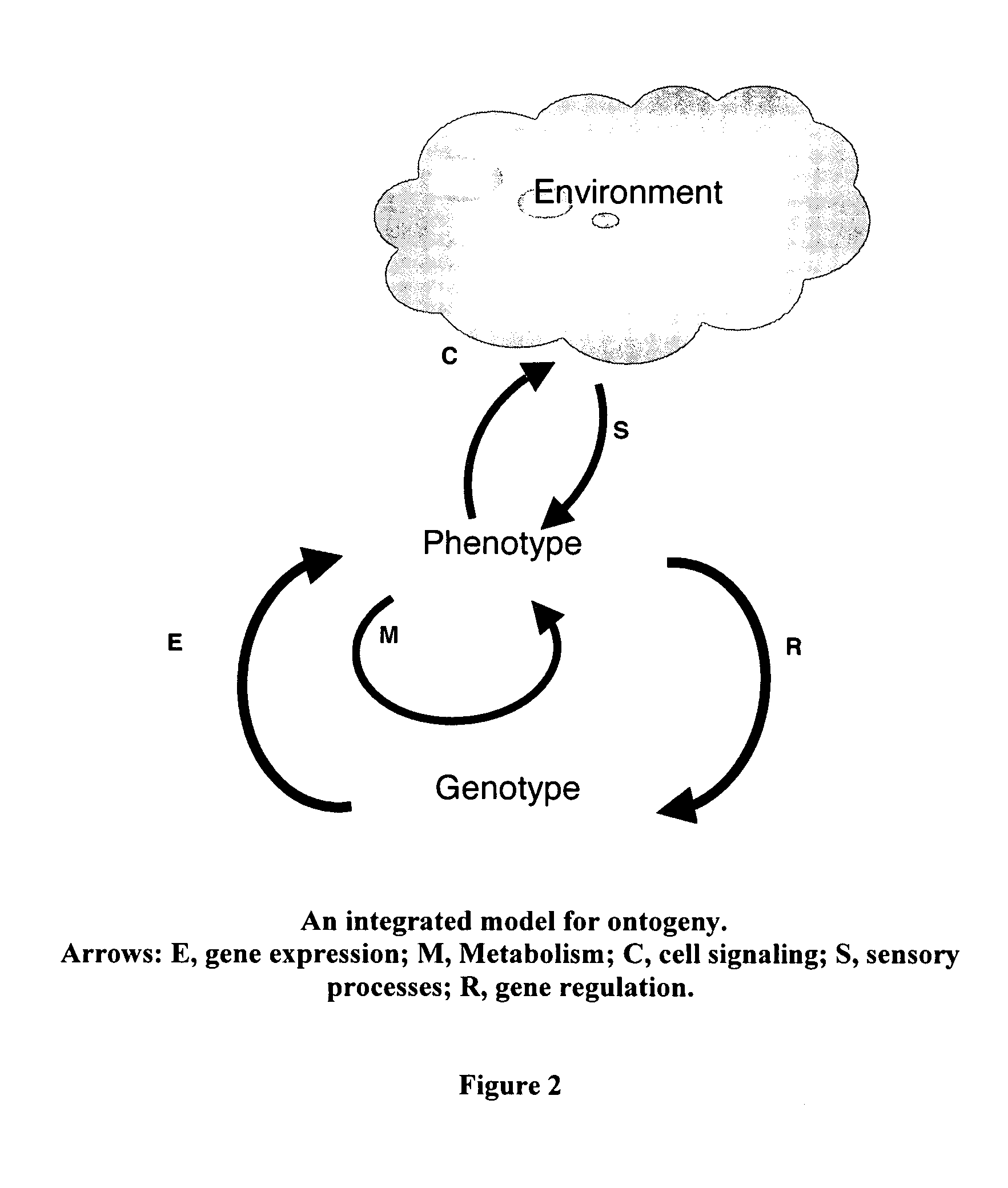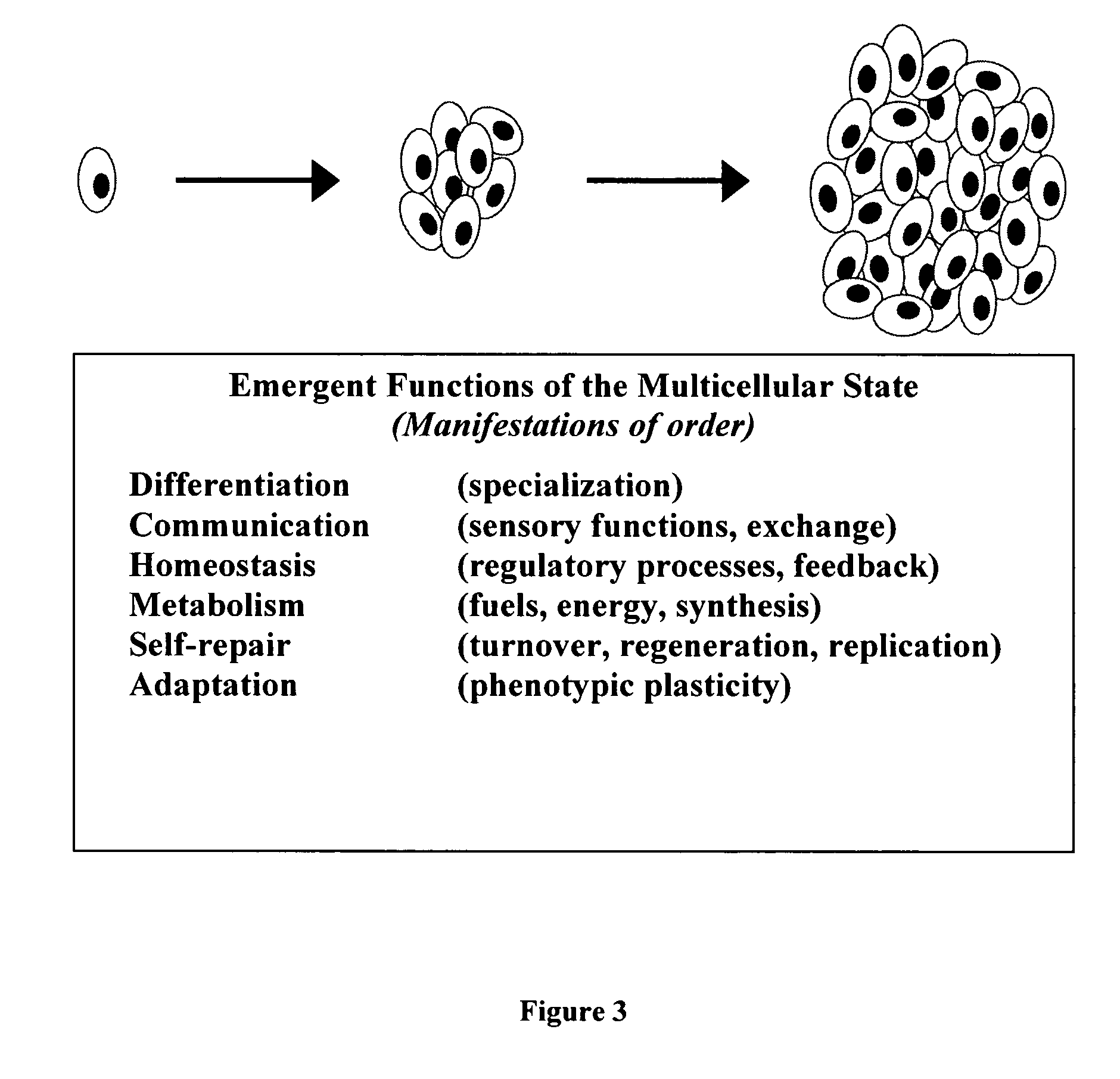Method, system, and apparatus for virtual modeling of biological tissue with adaptive emergent functionality
a biological tissue and emergent function technology, applied in the field of methods or steps for modeling or simulation of biological cells or tissues, can solve the problems of lack of adequate fidelity, hindering medical and biological research, simulation, and practice, and current models and their computational engines lack a comprehensive and biologically realistic basis
- Summary
- Abstract
- Description
- Claims
- Application Information
AI Technical Summary
Benefits of technology
Problems solved by technology
Method used
Image
Examples
Embodiment Construction
[0063]The conceptual framework for the present invention derives from avoiding the misleading and limiting perspectives suffered by previous art, specifically shifting from a gene-based model of phenotype to a cell-based perspective. Together with more comprehensive and faithful implementation of biological principles, the cell-based approach to modeling of this invention results in novel features that have been difficult, if not impossible, to achieve by conventional approaches.
Conceptual Basis for the Present Invention
[0064]The method, system, and apparatus of this invention include a computational approach and platform that incorporates principles of biology, particularly those primitive features of living systems that are fundamental to their construction and operation and that distinguish them from non-living systems. The goal in doing so is to identify, extract, and capture in algorithmic1 form the essential logic by which a developing system self-organizes and self-constructs...
PUM
| Property | Measurement | Unit |
|---|---|---|
| concentration | aaaaa | aaaaa |
| molecular affinity | aaaaa | aaaaa |
| CT | aaaaa | aaaaa |
Abstract
Description
Claims
Application Information
 Login to View More
Login to View More - R&D
- Intellectual Property
- Life Sciences
- Materials
- Tech Scout
- Unparalleled Data Quality
- Higher Quality Content
- 60% Fewer Hallucinations
Browse by: Latest US Patents, China's latest patents, Technical Efficacy Thesaurus, Application Domain, Technology Topic, Popular Technical Reports.
© 2025 PatSnap. All rights reserved.Legal|Privacy policy|Modern Slavery Act Transparency Statement|Sitemap|About US| Contact US: help@patsnap.com



